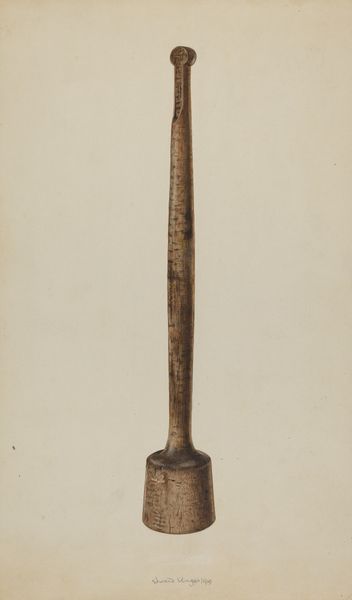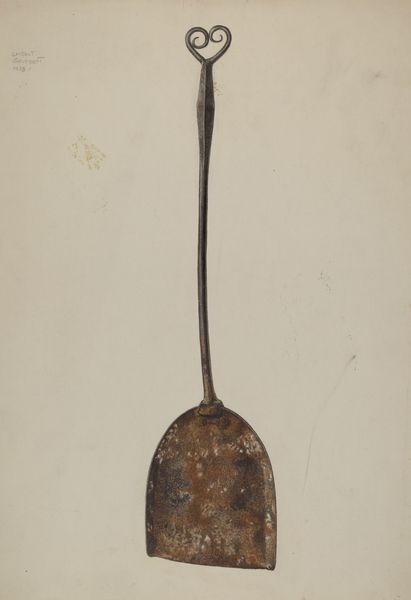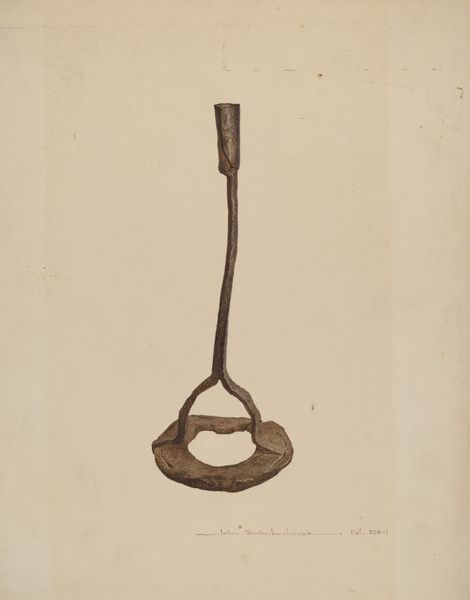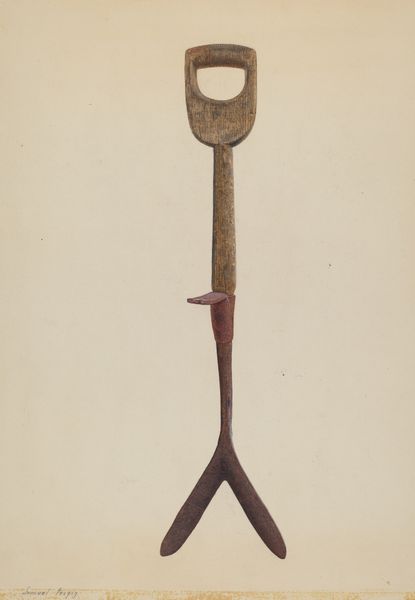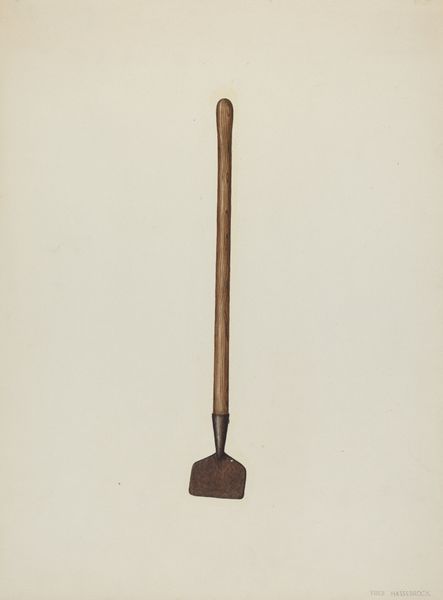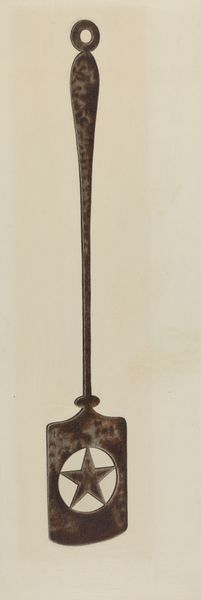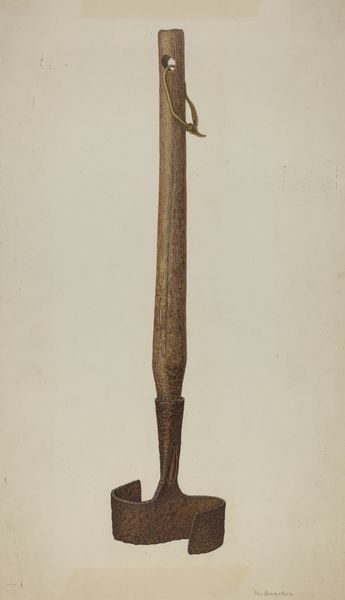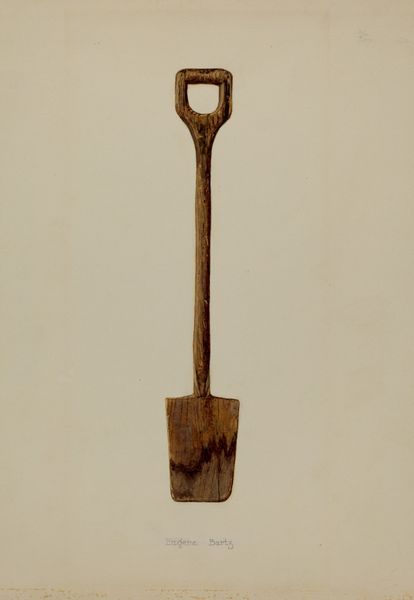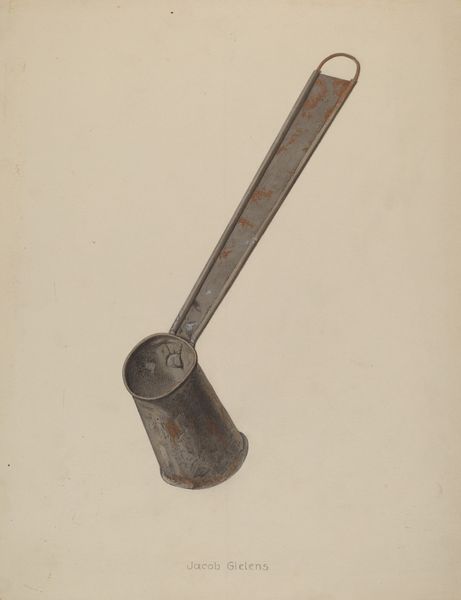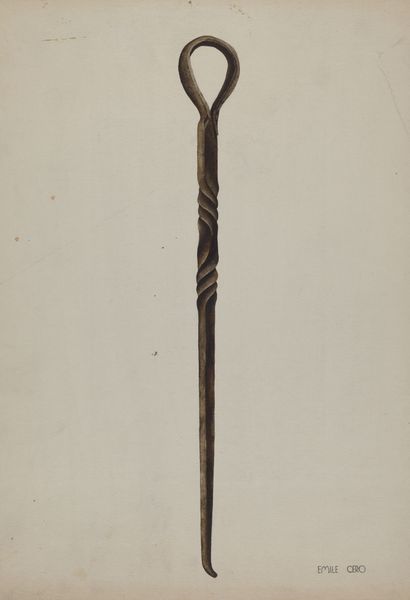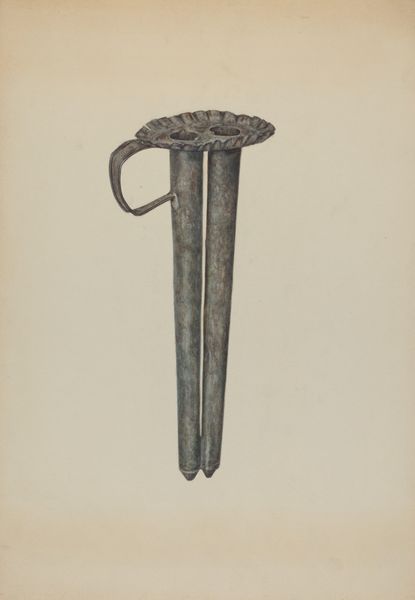
drawing, pencil
#
pencil drawn
#
drawing
#
pencil sketch
#
pencil drawing
#
pencil
#
watercolor
#
realism
Dimensions: overall: 35.1 x 24.6 cm (13 13/16 x 9 11/16 in.)
Copyright: National Gallery of Art: CC0 1.0
Curator: Looking at this unassuming rendering of an object, we see "Flue Shovel" by John Cooke, dating circa 1937. Editor: There’s a starkness to it. Almost confrontational in its directness. It’s just... a shovel. Very simply drawn with what looks like graphite. It's interesting how the mundane becomes the subject. Curator: Cooke rendered this object, most likely used for domestic coal heating. Its social value, then, resided in the daily life of a certain class and its technology of heating. The image feels somehow tied to notions of work and social realism popular at the time. Editor: It's clearly a well-used tool. You can see the wear, especially at the bottom. I like the emphasis on the physicality of the object. The drawing, although seemingly simple, gives a real sense of the material itself, the cold iron. I wonder about the specific labor involved in its production, and what working conditions existed where such a flue shovel would have been used. Curator: I am immediately drawn to think about how that very kind of representation changed. As coal fires became increasingly connected to pollution in urban areas after the 1950s, it’s very possible to consider how its image—as labor but also domestic symbol—began to transform over time. Editor: The patina and texture conveyed through Cooke’s handling of graphite give it a tangible feel. It brings forward not just the use-value of this simple item, but allows one to meditate on how design has long addressed needs tied to physical and even class-defined necessities. Curator: Right. And how artistic rendering engages not only the design aspects, but how politics inevitably intersect even such a utilitarian tool, by depicting what kinds of work became more visible. Editor: Looking at "Flue Shovel," it has shifted my perspective a little on these undercurrents, revealing the interplay between labor and its place in the wider economy through something we might otherwise easily overlook. Curator: Indeed. A simple drawing reveals layers of social and technological history. I see now that its power comes precisely from this quiet portrayal of everyday life.
Comments
No comments
Be the first to comment and join the conversation on the ultimate creative platform.
